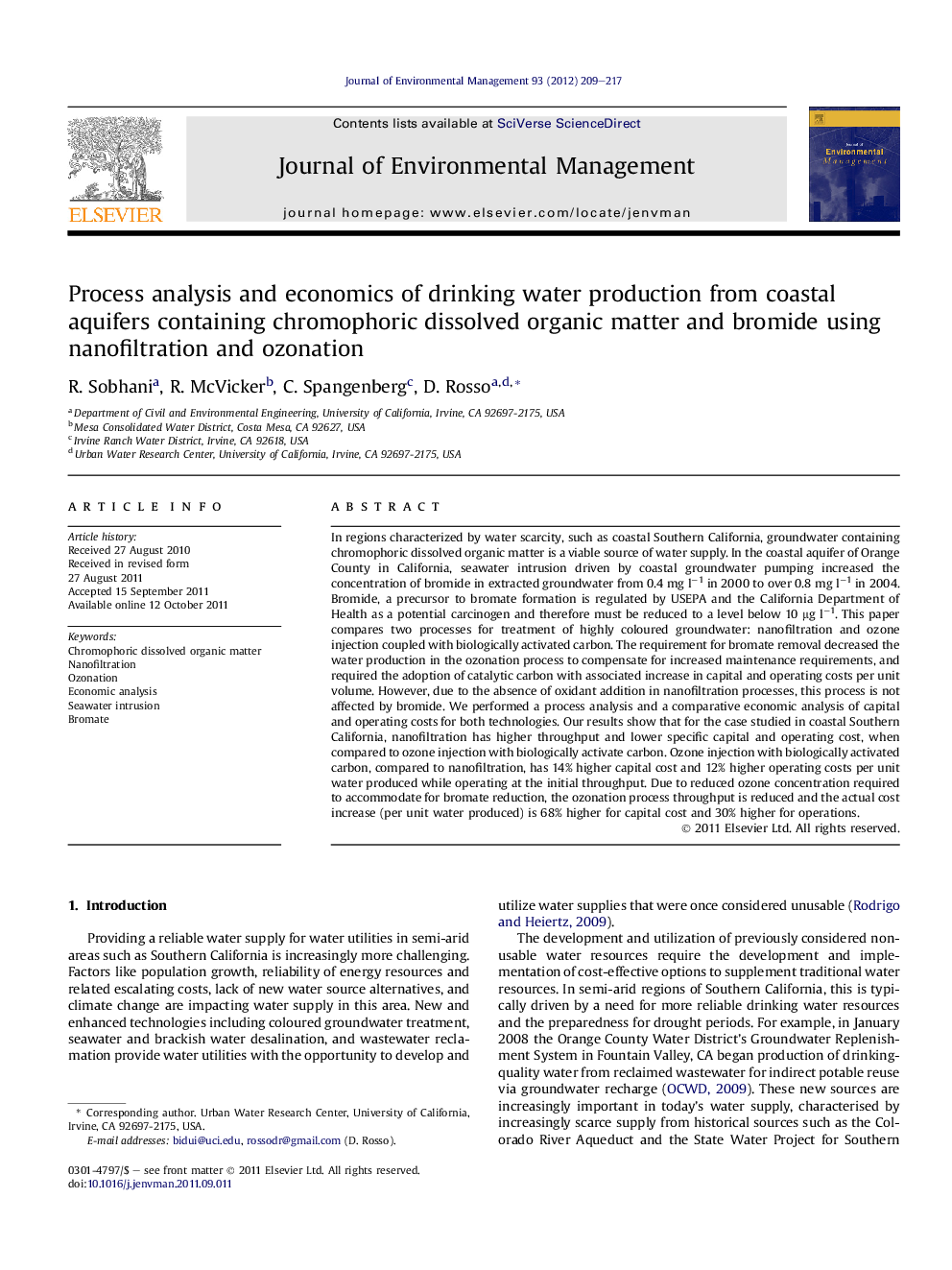| کد مقاله | کد نشریه | سال انتشار | مقاله انگلیسی | نسخه تمام متن |
|---|---|---|---|---|
| 1056982 | 947055 | 2012 | 9 صفحه PDF | دانلود رایگان |

In regions characterized by water scarcity, such as coastal Southern California, groundwater containing chromophoric dissolved organic matter is a viable source of water supply. In the coastal aquifer of Orange County in California, seawater intrusion driven by coastal groundwater pumping increased the concentration of bromide in extracted groundwater from 0.4 mg l−1 in 2000 to over 0.8 mg l−1 in 2004. Bromide, a precursor to bromate formation is regulated by USEPA and the California Department of Health as a potential carcinogen and therefore must be reduced to a level below 10 μg l−1. This paper compares two processes for treatment of highly coloured groundwater: nanofiltration and ozone injection coupled with biologically activated carbon. The requirement for bromate removal decreased the water production in the ozonation process to compensate for increased maintenance requirements, and required the adoption of catalytic carbon with associated increase in capital and operating costs per unit volume. However, due to the absence of oxidant addition in nanofiltration processes, this process is not affected by bromide. We performed a process analysis and a comparative economic analysis of capital and operating costs for both technologies. Our results show that for the case studied in coastal Southern California, nanofiltration has higher throughput and lower specific capital and operating cost, when compared to ozone injection with biologically activate carbon. Ozone injection with biologically activated carbon, compared to nanofiltration, has 14% higher capital cost and 12% higher operating costs per unit water produced while operating at the initial throughput. Due to reduced ozone concentration required to accommodate for bromate reduction, the ozonation process throughput is reduced and the actual cost increase (per unit water produced) is 68% higher for capital cost and 30% higher for operations.
► Southern California’s coastal aquifer has Chromophoric Dissolved Organic Matter.
► We analysed two processes for CDOM removal, nanofiltration and ozonation.
► The ozonation process must be amended to reduce bromate by-products.
► The effect of bromate formation is an increased cost for ozonation.
► Overall, nanofiltration has lower operating cost, for the case studied.
Journal: Journal of Environmental Management - Volume 93, Issue 1, January 2012, Pages 209–217